Prof. K. GanapathyInnovaSpace Advisory Board member, Past President Telemedicine Society of India, Former Secretary/Past President Neurological Society of India & Indian Society for Stereotactic & Functional Neurosurgery, Emeritus Professor Tamilnadu Dr MGR Medical University, Former Adjunct Professor IIT Madras & Anna University Madras, Founder Director, Apollo Telemedicine Networking Foundation & Apollo Tele Health. Could Telehealth be the way forward in helping to manage the COVID-19 pandemic in India? The InnovaSpace Team
Quando se pensa em viajar de avião, a primeira coisa que vem à cabeça é o serviço de bordo e as opções de alimentação. Brincadeira! É a segurança, claro. Todo mundo quer decolar, viajar e aterrissar em paz. Mas, para que tudo possa acontecer de uma forma tão profissional que você nem perceba, muitas pessoas estão trabalhando nos bastidores. A tripulação – piloto, copiloto, comissários, técnicos – tem muita responsabilidade. Vivem uma rotina difícil de horas e horas no ar, com alguns intervalos no solo. Por isso, você já imaginou como é a saúde deles? Como fazem para ter corpo e mente saudáveis? E os passageiros? Será que todos estão em condições de voar? Esses questionamentos motivaram horas de estudo dos médicos Thais Russomano e João de Carvalho Castro, os quais dedicaram muito de sua vida acadêmica à medicina aeroespacial. E você tem a oportunidade de conhecer o trabalho deles em detalhes através do eBook "A Fisiologia Humana no Ambiente Aeroespacial".  Abaixo, um trecho do livro para que você possa se inspirar: "O sonho de voar sempre esteve presente no imaginário humano desde os tempos mais remotos. Atualmente, cruzar o mundo de um lado para o outro, aproximando pessoas, vencendo barreiras geográficas e integrando culturas, é uma realidade viável e acessível. O ambiente aeroespacial, porém, difere do terrestre e impõe vários riscos à saúde e à segurança de aviadores, da tripulação de bordo e de passageiros durante um voo." O eBook foi oficialmente lançado em 19 de Fev, na Ordem dos Médicos, Secção Sul, Lisboa, Portugal, com o suporte da Sociedade Médica Científica Aeroespacial - Associação Portuguesa (SMAPor). Os convidados tiveram ainda a oportunidade de assistir a três palestras. Na primeira, Thais Russomano debateu o tema "Fisiologia Humana no Espaço". Após, João Castro explorou aspectos ligados à "Fisiologia Aeroespacial". Por fim, a médica Rosirene Gessinger abordou o tema "Medicina de Aviação". O evento e o eBook são iniciativas da InnovaSpace, uma empresa britânica do tipo Think Tank, global e inclusiva, de caráter multicultural e multidisciplinar. A InnovaSpace atua nas áreas espacial, aeronáutica e em telessaúde. E tem uma missão educativa muito importante: fazer com que a ciência espacial seja democratizada, tornando-a um assunto comum ao maior número possível de pessoas mundo afora!
O livro pode ser comprado no site Smashwords. Registre-se aqui primeiro, faça uma pesquisa usando nome dos autores ou o título do livro para encontrá-lo. Compre e faça o download, como um arquivo epub ou mobi. Prof. K GanapathyInnovaSpace Advisory Board member, Past President Telemedicine Society of India, Former Secretary/Past President Neurological Society of India & Indian Society for Stereotactic & Functional Neurosurgery, Emeritus Professor Tamilnadu Dr MGR Medical University, Former Adjunct Professor IIT Madras & Anna University Madras, Founder Director, Apollo Telemedicine Networking Foundation & Apollo Tele Health. 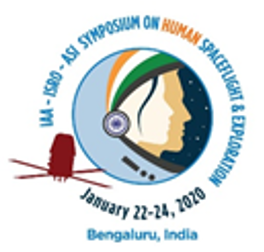 January 22-24th 2020 saw the taking place of an international Symposium on Human Spaceflight, in Bengaluru, India. The event, jointly organised by the Indian Space Research Organisation (ISRO), International Academy of Astronautics (IAA) and Astronautical Society of India (ASI), under the theme of ‘Human Space Flight and Exploration – Present Challenges and Future Trends’, saw the coming together of more than 500 national and international delegates, all experts in the field of human spaceflight related technologies, from space agencies, astronauts, representatives of International space industries and academic institutes, young professionals and students. The Symposium was inaugurated on the 22nd January 2020 by Prof. K VijayRaghavan, Principal Scientific Advisor to the Government of India, in the presence of Dr K Sivan, Chairman of ISRO, and the Honourable Prime Minister of India, Shri Narendra Modi conveyed a special message to the symposium participants. The PM highlighted that the benefits of India’s Space programme should be shared with the entire world, in line with India’s wisdom of "Vasudaiva Kutumbakam" - which in Sanskrit means the World is one family. Shri P Kunhikrishnan, Director, URSC and Chairman of the Local Organising Committee, welcomed the participants. Dr B N Suresh, Honorary Distinguished Professor, ISRO and Dr Jean Marc Astorg, Director Launch Vehicle Directorate, CNES, France, the International Programme Committee Co-Chairs addressed the gathering.  Symposium participants and delegates Image source: ISRO Symposium participants and delegates Image source: ISRO The ‘Heads of Space Agencies Panel’ was composed of the Space Agency chiefs from India and Romania, and the heads of the Human Spaceflight Programmes of CNES (France), NASA (USA), JAXA (Japan), ASI (Italy), and ROSCOSMOS (Russia). The agency heads made deliberations on the progress and future plans of the respective Space Agencies under the changing landscape and economics of human spaceflight and deep space exploration. Mr Jean-Yves Le Gall, President of CNES addressed the gathering on January 24, 2020 on the Indo–French partnership in human spaceflight. Another significant event in the Symposium was the ‘Astronaut Panel’ held on January 23, 2020 with the participation of five astronauts from France, Germany, Russia, USA and UAE, with the panel being moderated by Air Commodore (Retd) Mr Ravish Malhotra. The astronauts presented their thoughts on spaceflight and the technical, physiological and psychological challenges of humans during spaceflight. The Symposium received a good response from the Industry, and an exclusive industry panel was also organised providing an opportunity for Indian and foreign space industry leaders to discuss their perspectives on human spaceflight and exploration. A total of 19 invited and plenary lectures were delivered by eminent experts in the Human spaceflight area, from USA, Russia, France, Japan, Italy, Germany and the UAE. Around 100 technical papers were presented by the delegates from different countries under 5 major topics, namely, Challenges, Enabling Technologies, Ground Systems, Scientific and Societal Relevance, Policy Aspects and Economics of human spaceflight. In addition, an exclusive student session was held (January 23, 2020) to give a special focus on the younger generation. Sixty students from premium academic institutions across the country participated in the session and 10 selected papers were presented by students. An exhibition of technologies and products related to Human Spaceflight, including space food, was organised as part of the symposium. A full-size model of a Crew Module, scaled models of the Crew Escape System, and the space station concept were showcased. The three-day Symposium has enabled an exchange of information between the delegates on the latest trends in human spaceflight exploration.  India's Vyommitra 'space robot' India's Vyommitra 'space robot' Also on show at the symposium was the Vyommitra 'space robot', a half-humanoid being made to accompany astronauts on the #Gaganyaan mission, and able to monitor biological parameters and perform life support operations. The robot will also be able to converse with the astronauts, recognise them and respond to their queries, as well as respond to commands from the control centre in Bengaluru and give feedback to the scientists who will be monitoring from Earth. Sources: 1 - https://www.isro.gov.in/update/24-jan-2020/iaa-isro-asi-symposium-human-space-flight-and-exploration-was-organised-bangalore 2 - https://www.news18.com/news/tech/isros-vyom-mitra-humanoid-robot-set-for-an-unmanned-trip-into-space-watch-video-2469801.html InnovaSpace Advisory Board Member Prof K. Ganapathy presented a paper at the symposium on “Neurological Changes in Outer Space”. It was the only paper presented by a medical doctor and served to raise the awareness of leading space scientists, engineers and technologists to the significance of giving equal importance to the health of the Vyomanauts on board the spacecraft.
Adam J CrellinGraduate Medical Student, Oxford University; Analog Astronaut, Austrian Space Forum  Analog astronaut Adam Crellin giving his graduation speech Analog astronaut Adam Crellin giving his graduation speech While attending the 2019 European Mars Conference in London this week at the Institute of Physics, we had the pleasure of witnessing the graduation ceremony of the next cohort of newly qualified Austrian Space Forum (OeWF) analog astronauts, who will take part in next years' AMADEE20 Mars analog mission in Israel. Analog astronauts are people who have been trained to test equipment and conduct activities under simulated space conditions, and they play an important role in preparing for future Moon and Mars missions. We liked so much the graduation speech given by analog astronaut Adam Crellin that we asked if we could publish it here on the InnovaSpace website to inspire all the young would-be astronauts out there - dream big! "I would like to open by saying not only how much of an honour it is to speak on behalf of my classmates and the Austrian Space Forum today, but also to stand in front of you all as a newly qualified analog astronaut. I am especially proud to be speaking at a European-wide conference in the UK, organised by the recently reformed Mars Society UK.
In classrooms across the UK, and even the world, children are being asked by their primary school teachers, the existential question of ‘what do you want to be when you grow up?’. Some of these children, fascinated by space, will say they want to be an astronaut. Children often continue this hope as they grow older, perhaps keeping it a bit quieter, guarding it a bit more closely. Later, they then discover that there are a huge range of diverse opportunities in space, and that astronauts are one small cog in a large machine. A machine that contains astronauts who plant flags; plant experts who grow astrocrops; astronomers who study the universe and its laws; lawyers who write legislation through careful engineering; engineers who build spacecraft that rock; and, well, for those who like rocks, there is geology as well as countless other professions." Dr Karina OlianiER Doctor, mountaineer & adventurer 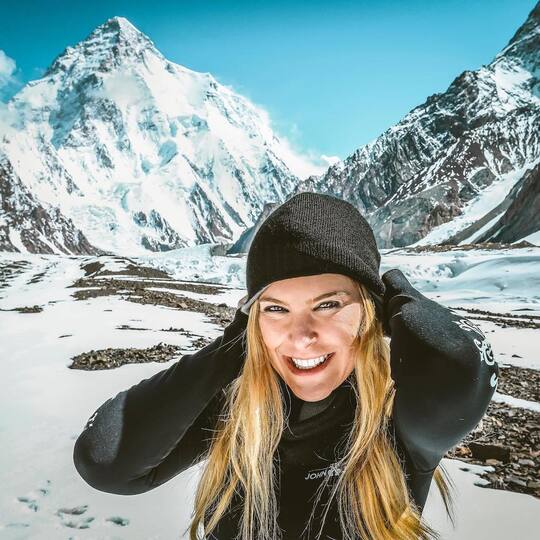 My name is Karina Oliani, and I'm a doctor specializing in Emergency Medicine and Rescue in Remote Areas. Outdoor challenges have always been my passion, and because of this, I've participated in countless expeditions at sea, up mountains, in jungles and in the desert, including climbing Everest 2 times - by the South face in 2013 and North face in 2017. I also love diving and have dived in all the oceans with the biggest predators. In parallel, I am a producer of audio-visual content and have already produced work for the Globo programs "Fantástico" and "Esporte Espetacular" in Brazil, and I have worked as a presenter and guide for the reality shows "Celebrities' Challenge" and "Extreme Mission" on the Discovery Channel.
 For more than four years I have been trying to realize my dream of climbing K2, which is considered to be the most difficult and dangerous mountain to climb on Earth. The first year I couldn't do it because of work commitments, the next year through a lack of sponsorship, and then once again it was not possible as I became very ill after being bitten by a tick. But when you have had a desire for such a long time, you don't give up easily! The expedition to K2 wasn't easy for me, either physically or mentally. As already mentioned, for most of 2018 I was battling the tick-borne Lyme disease, which is transmitted by the bite of a tick infected with the bacterium Borrelia burgdorferi, and for which I still have to take medications. As it turned out though, I hardly felt the effects of the disease during the climb, probably because of the decreasing oxygen levels during the ascent - I think perhaps the Borrelia didn't like the lack of oxygen! K2 is a truly beautiful mountain, very impressive, and one that I was always drawn to, maybe because it represents every challenge a climber expects and more. It is situated in the Karakoram mountain range, which is an extension of the Himalayan mountains, and it sits on the borders between Pakistan and China. K2 has been dubbed “The Wild Mountain,” and one in five of the climbers who have attempted to reach its summit have died. Dr. Gabriela S. PiloOceanographer, Institute for Marine & Antarctic Studies (University of Tasmania, Australia)  Oceanographer, Dr. Gabriela S. Pilo Oceanographer, Dr. Gabriela S. Pilo It is quite easy to draw a parallel between ocean and space exploration. Both require a ship, a large sense of adventure, and a love of discovery. But there are more similarities between the ocean and space than simply their ability to feed the imagination of writers, musicians, and curious minds. The ocean, like space, is still unknown. Similarly to space research, ocean researchers are still trying to fill several knowledge gaps. We’ve advanced a lot since the beginning of modern Oceanography, attributed to the Challenger Expedition in 1872. We have now charted the main ocean currents, from the surface down to the bottom of the ocean, at 6000 m depths. We understand how and where surface waters become dense and sink, creating a conveyor belt that connects the whole planet, travelling for 1000 years before re-surfacing. We also understand that ocean currents interact with the wind, the ocean floor, and with each other, and break into several rotating bodies of water, known as ocean eddies. These eddies spin away, carrying their parent current’s water to distant parts of the ocean. However, as in space, there is still a lot we don’t know. Gaps in ocean research relate to balances of energy and of biogeochemical compounds, and to the response of the ocean to a changing climate. Considering that there still so much to learn, we often find ourselves in the middle of the ocean looking for answers. This brings up the second similarity between ocean and space research: when you are out there, conditions can get harsh! Open-ocean Oceanographic cruises can last for up to 3 months, having only a few shore stops during this time. Therefore, like in space, an oceanographic vessel must be autonomous for a long period of time. During research cruises, scientists and crew members are putting all their efforts into sampling the water and measuring physical properties of the ocean. Sampling happens under all circumstances, in the middle of the night, in rain, snow, and under very high wave conditions. In addition, icebreaker vessels can go deep into an ice field, and reach the most remote parts of the world. Ocean-sickness, just like space-sickness, often kicks in, as your body gets used to the constant movement. You are also living in a confined space with like-minded people that have one goal: to do science. But the ocean is not just a large body of water, flowing and crashing against the shore. The bathymetry of the ocean, the chemical elements dissolved in the water, and the animals, microbes, and algae that live in it, are equally important and fascinating. Oceanography is a highly multidisciplinary research field. Therefore, to fully understand the ocean, we need to collaborate. It takes a team of physical oceanographers, marine biologists, geologists, meteorologists, glaciologists, and several other scientists to put the pieces of the puzzle together. This team work builds up our knowledge of the ocean. Just like in the space sciences, collaboration is key! For example, the InnovaSpace Team is composed of experts in life science, telehealth, and engineering. Finally, the ocean, like space, is vast. We cannot be everywhere, at all times to study it. To obtain global, constant measurements of the ocean we rely on state-of-the-art sensors, similarly to space research. The sensors to measure the ocean are either aboard a series of artificial satellites orbiting the Earth, or in instruments placed in the water. Sensors onboard satellites can measure the sea surface temperature, salinity, and sea surface height. In the water, sensors are aboard floats, mooring arrays, automated underwater vehicles, remotely operated vehicles, gliders, and seals (!). Operational oceanography is a fascinating field of research, and at its heart sits the Argo array, composed of 4000 Argo floats measuring temperature and salinity of the top 2000 m of the ocean since 2005. This array has helped oceanographers to answer important questions on ocean circulation and climate change.
Ultimately, the ocean - just like the space - brings fascination. The excitement of discovery is present both when exploring a deep canyon or a distant quasar. In the end, the ocean is also a final frontier. A frontier, however, closer to home! Adriana Bos-MikichDepartment of Morphological Sciences, ICBS, Federal University of Rio Grande do Sul, Brazil 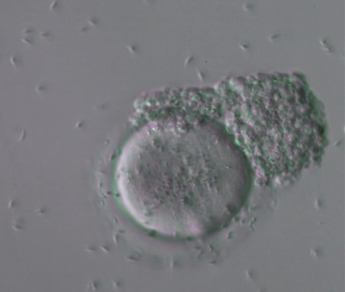 Human sperm and oocyte Image: Nilo Frantz Human Reproduction Centre, Porto Alegre Human sperm and oocyte Image: Nilo Frantz Human Reproduction Centre, Porto Alegre Amazing as it may seem, as the number of spaceflights has increased and life aboard space stations has become a reality, the effects of high levels of space radiation and microgravity (micro-G) on mammalian reproduction are still largely unknown. Therefore, the study of reproduction in space is a very important subject for the future of space missions. Research conducted with experimental non-mammal animals, such as sea urchins, fish, amphibians, and birds has concluded that micro-G does not prevent animal reproduction. However, mammalian reproduction presents specific features, such as ovulation, sperm and oocyte (egg) transit in the reproductive tract, embryo attachment, implantation and placentation, which are specific to mammalian reproduction and cannot be studied in non-mammal species. Surprisingly, little information is available today on how these processes occur in conditions of microgravity.  KSC Researchers preparing Micro-11 experiment sperm samples for launch to the ISS. Credits: NASA KSC Researchers preparing Micro-11 experiment sperm samples for launch to the ISS. Credits: NASA A first problem requiring investigation is the supposed difficulty that sperm and egg cells may have to travel along the female reproductive tract to accomplish natural fertilization under micro-G conditions. A project with 100% relevance is NASA’s Micro-11 research, which aims to examine putative motility alterations in human and bull sperm during spaceflight. “Micro-11 provides fundamental data indicating whether successful human reproduction beyond Earth is possible, and whether countermeasures are needed to protect sperm function in space” (NASA). Rapid directional sperm motility is a key factor for successful fertilisation under natural circumstances. Sperm cells need to swim up the uterine cervix, travel through the uterine cavity and fallopian tubes to meet and fertilise the oocyte. To accomplish all these tasks, human sperm respond to chemoattractant signals, to temperature gradient, and to fluid flow. These guidance mechanisms occur naturally along the female reproductive tract and are important for the sperm-egg encounter and for natural fertilisation to occur in the fallopian tubes, but will these mechanisms be sufficient in micro-G? Experimental studies with mice have revealed impaired male germ cell generation under microgravity conditions. Of concern are alterations seen in the physiology of testicular cells observed under conditions of simulated microgravity, which may obscure the starting point of mechanisms that lead to long-lasting tumorigenic processes. However, a recent research has shown that the deleterious effects of microgravity on germ cell proliferation, oxidative metabolism and autophagy may be, at least partially, prevented by the presence of antioxidants in the germ cell culture medium. This finding represents an important contribution to the current knowledge of microgravity effects on germ cell tumour metabolism and development. According to estimates, nearly one in six couples worldwide seek out assisted reproduction technologies for having a child. Thus, it is expected that fertility assistance may also be necessary in space due to naturally occurring fertility problems or due to micro-G induced infertility conditions. A report from the 35th annual meeting of the European Society of Human Reproduction and Embryology recently revealed that frozen human sperm retain their viability and fertilising capacity in outer space, similar to sperm samples stored in liquid nitrogen under Earth’s gravity conditions. This represents a reassuring finding, particularly when considering the importance of sperm cryostorage for fertility preservation, such as in the case of cancer patients who may lose their reproductive potential due to oncological treatments. It also allows us to hypothesise that donor intra-uterine insemination may represent a viable option for having a child under the micro-G conditions found in space stations. The more complex assisted reproduction technology (ART), “in vitro fertilisation” (IVF), developed by Sir Robert Edwards and Dr. Patrick Steptoe, allows fertilisation to occur outside of the body, i.e., outside its natural tubal environment, in a plastic petri dish, giving rise to the term “test-tube” baby. Its main purpose is to promote fertilisation when the natural encounter of sperm and oocyte is not possible, as is the case of women presenting blocked uterine horns. In summary, oocytes are first collected from the ovaries, (performed by transvaginal ovarian puncture and aspiration) and placed in a petri “IVF” dish containing a culture medium that mimics the tubal micro-environment. The male partner produces a sperm sample, which is prepared for mixing with the oocytes, after which the IVF dish is maintained in a warm incubator (37oC) in a laboratory for fertilisation to take place. The sperm must be able to swim and penetrate the oocyte membrane for fertilisation to be accomplished, and to assist this they are placed close together to facilitate their interaction and fusion. The resulting embryos remain in the incubator for up to six or seven days, before being transferred to the womb. However, fertilisation will not occur under natural or even IVF conditions when the ejaculated sperm do not present rapid directional motility in a condition called asthenospermia, a common cause of unsuccessful reproduction among infertile couples. To help these individuals generate their own descendants, the ART “intracytoplasmic sperm injection” (ICSI) technique was developed by Dr. Gianpietro Palermo. ICSI allows fertilisation to occur even when the sperm sample is poor in terms of number and/or motility.  The technique uses a micromanipulation station fitted to an inverted microscope equipped with contrast optics that enable three-dimensional visualisation of living cells. The ICSI micromanipulation equipment consists of two glass pipettes; a holding pipette to fix the oocyte and an injection pipette to introduce the sperm into the oocyte cytoplasm (see below video). The ICSI insemination strategy allows fertilisation to occur even under unfavourable conditions, and it can perhaps be hypothesised that this technology may be of assistance in the case of sperm motility deficiencies in outer space, where micro-G conditions may prevent natural, unassisted sperm-egg fusion. Undoubtedly, much more research needs to be performed before we can erase the large question marks that remain as to the likelihood of natural fertilisation taking place in mammals under micro-G conditions, and if required, how effective current assisted reproduction technology would be when using the ART setup and equipment developed on Earth. With talk of future Moon and Mars colonisation and space hotels in the coming decades, there will come a time when human reproduction under microgravity conditions will need to be better addressed if life is to be sustained in off-Earth environments.
 Life in research and academia is often busy, with commitments to attend conferences to disseminate your work, learn of what other research is being conducted in your field of interest, and to build a network of like-minded people linked by common themes. InnovaSpace’s Scientific and Strategic Consultant Roberto Fanganiello is no exception to this way of life and travels frequently around the globe, with last week seeing him in Canada attending the 7th International Symposium on Surfaces and Interfaces for Biomaterials (ISSIB, 22-25 July 2019), held at the Quebec City Convention Centre, in Quebec. His time was well filled with activities over three of the conference days; giving a talk at a tutorial session on the innovative strategies used to design surfaces and interfaces for biosensors, as well as on surface modifications of biomaterials to make them optimal for association with different types of cells; giving a keynote talk at the main conference, on surface modifications of titanium implants to improve bone tissue formation and regeneration; and chairing a session on Future Trends in material and biomaterial sciences.  Surfaces and interfaces in biomaterials are topics of key significance in the fields of biomaterials and tissue engineering, and form a strong scientific platform for technological innovation and economic growth worldwide. Many novel ideas and concepts were shared at this year’s ISSIB Symposium, together with an exchange of information regarding the use of emerging technologies and fundamental advances in biomaterial surfaces and interfaces. Plans are already afoot for the next edition of the ISSIB Symposium, scheduled to take place in Australia in 2021, and Roberto, among others, is eager to see just how much these technologies will have progressed by then! The InnovaSpace team in the last years have been involved on a couple of occasions with the innovative activities of Guerilla Science, as they seek to connect the general public with science in new and interesting ways. The benefits of yoga on Earth are well known, and it is certainly an activity that would improve the health of anyone practicing it regularly. The Guerilla crew have come up with a series of great videos linking dynamic yoga stretches with the effects of microgravity on the human body and mind, assisted by five expert space scientists, one of which is InnovaSpace's very own Space Life Sciences Expert Dr. Lucas Rehnberg, who explains about Space Walks and the problems astronauts face when conducting maintenance tasks on the outside of the International Space Station. Get out your yoga mats, exercise your body, and stretch your mind learning fascinating facts about the human body in space! Dr. Lucas RehnbergInnovaSpace Space Life Sciences Expert. Recently I had the pleasure to attend the world’s largest aerospace medicine conference in Las Vegas, the 90th Annual Aerospace Medical Association (AsMA) Conference. This was my second AsMA (@Aero_Med) meeting and it didn’t disappoint. As a doctor training in the UK with an interest in space medicine, the AsMA conference is a great opportunity to present work, meet other space medicine enthusiasts as well as individuals from different disciplines – but all with a shared passion for space and aerospace. The thought behind this blog was to serve as a taster of what AsMA has to offer to those thinking about pursuing a career in this field or who want to gain an idea of how to become involved. So, this was my experience of the conference: Day 1 - Monday
Started with an incredible opening session commemorating the 50th anniversary of Apollo 11 and the moon landing. The panel was moderated by Dr Mike Barratt, astronaut and flight surgeon, and consisted of some giants from the Apollo missions: - Dr Charles Berry & Dr Bill Carpentier, Apollo flight surgeons. - Gerry Griffin, Apollo flight director. The session opened with a specially commissioned video dedicated to the Apollo 11 landing in 1969 and the lead-up time. It was an excellent reminder of what was achieved when a nation came together and set the tone for the discussion, reflecting on their experience of Apollo 11 and the Apollo missions. Some of my favourite moments of this session include when Dr Berry told a great story of stopping President Nixon from having a meal with the Apollo 11 crew the night before their launch, including a letter he wrote to President Nixon apologising for this. Then flight surgeon Dr Carpentier told us what flight surgeons learnt from the Mercury and Gemini missions, before starting on the Apollo missions. Dr Carpentier also spoke about some of his training, including practicing jumping from a moving helicopter in order that he could give medical assistance to the landing Apollo crews. Gerry Griffin spoke of the pressure of the Apollo missions and the relief mixed with excitement when the Apollo 11 crew set foot on the aircraft carrier after their landing. He also spoke about the Apollo 1 tragedy, what we learnt from all the Apollo missions, and how this will help human spaceflight now that we are focusing on going back to the Moon. Closing comments from each of the panel followed a similar theme, summed up best by Gerry Griffin, "We’ve gotta get back to the Moon. It’s been 50 years since we’ve done it...we need to get our mojo back." |
Welcometo the InnovaSpace Knowledge Station Categories
All
|
UK Office: 88 Tideslea Path, London, SE280LZ
Privacy Policy I Terms & Conditions
© 2024 InnovaSpace, All Rights Reserved




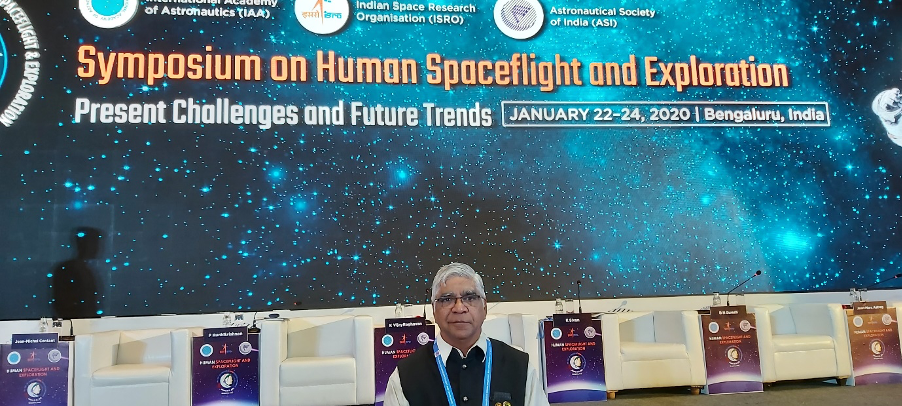
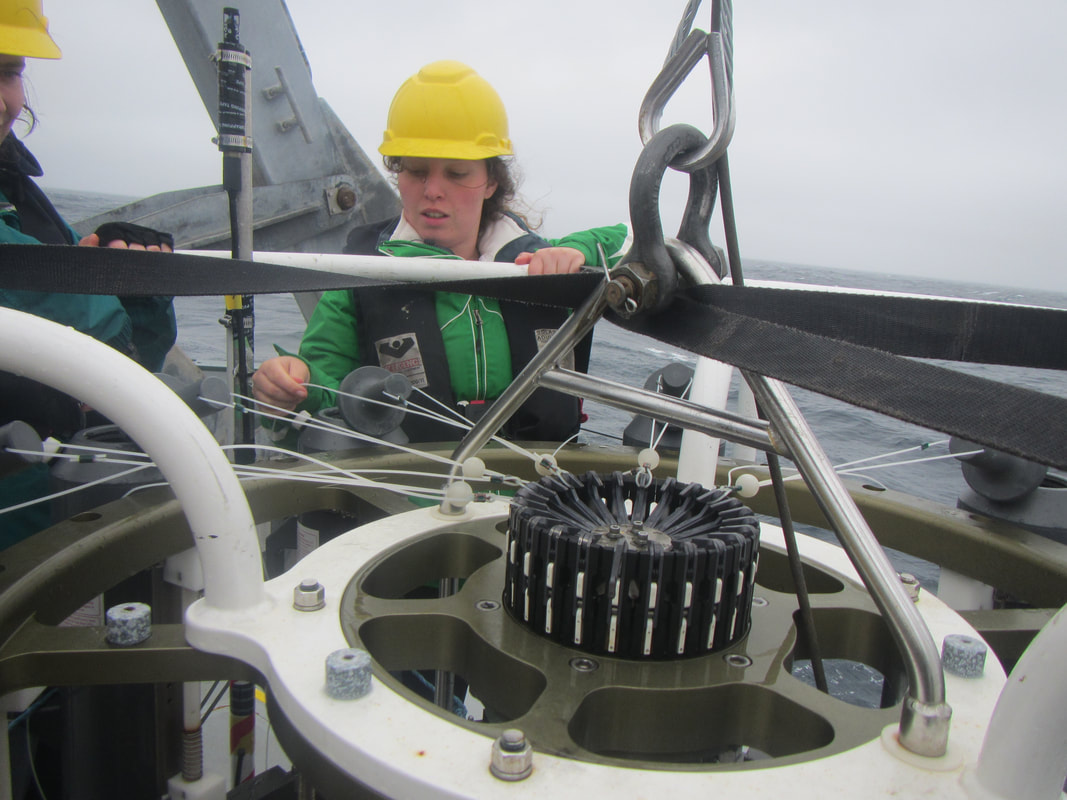




 RSS Feed
RSS Feed